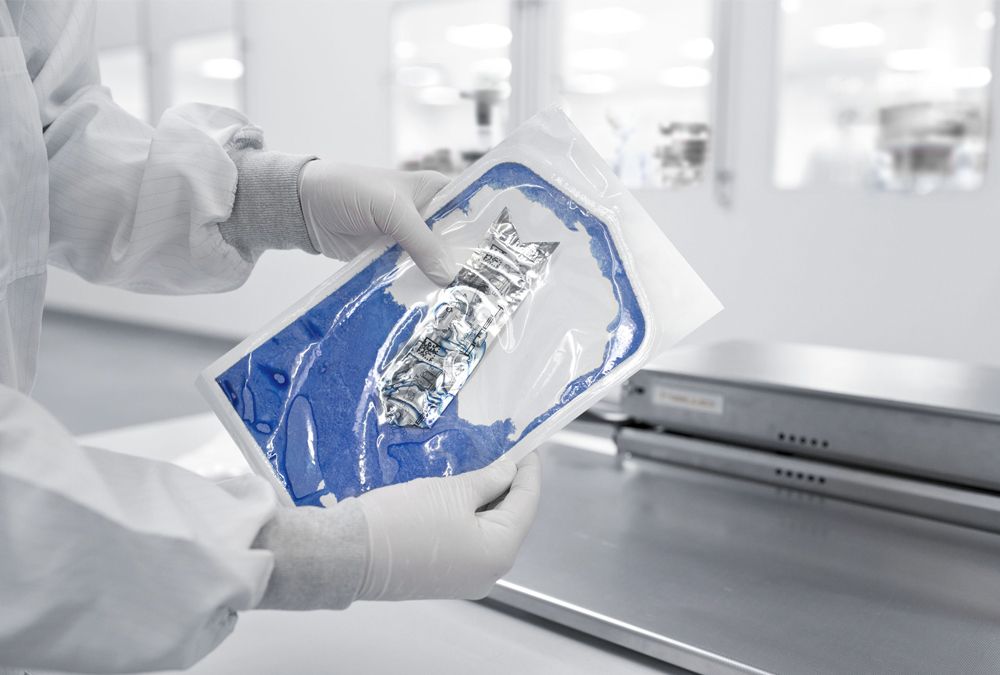Whether you’re a medical device manufacturer or you are part of a small team at a local hospital or clinic, the importance of medical packaging testing is incredibly high – after all, the packaging used to protect medical instruments and devices can be the difference between the sterile delivery of a medical device, and one that exposes patients and employees to a higher risk of acquiring a healthcare-associated infection. In this guide, we’ll be discussing the critical importance of medical package testing for your organization, and how you can ensure safety and compliance through regular medical device pouch/package testing.
The Role of Medical Packaging Testing
In the healthcare industry, medical packaging is a crucial component in the safe and effective delivery of drugs, devices, and other medical products. Not only does it protect the product during transportation and storage, but it also serves as a barrier against contamination and deterioration, especially in settings where there is a high flow of traffic, like the emergency room. For any organization operating in the healthcare sector, adequate medical package testing is therefore an essential part of the packaging process. Among the organizations that are leading the way in the testing space is Van der Stähl Scientific, whose testing spans a huge range of medical device pouch testing systems as well as medical device pouch testing services in their ISO 17025 Accredited empirical laboratory.
The consequences of not testing medical packaging can be severe – in addition to risking the safety and efficacy of the product, businesses can face regulatory penalties, product recalls, and lawsuits. Moreover, the reputational damage that can result from packaging errors can be long-lasting and difficult for businesses to recover from.
Ensuring Safety and Compliance Through Testing
The primary goal of medical packaging testing is to ensure the safety of the product it contains – this is especially important for products that are intended for human use, where any error in packaging can lead to serious consequences. Testing involves a series of assessments, including an evaluation of the packaging material and sealing, as well as the stability of the product inside.
However, medical packaging testing isn’t just designed to keep patients safe – it’s also essential for continued compliance with regulatory bodies. The US Food and Drug Administration (FDA), for instance, has strict guidelines for medical packaging designed to ensure that it meets the highest standards of safety, and companies that fail to meet these standards can face severe consequences, including product recalls, fines and even legal action.
Understanding The Importance of Packaging Design
The design of medical packaging plays a crucial role in its overall effectiveness. A well-designed package can prevent contamination, breakage, and tampering, while also improving the ease of use for the end-user. Often, the design of the packaging will also take into account the specific needs of the product it contains, such as temperature and light sensitivity – two surprisingly influential factors when it comes to the security of a product.
In addition, the design of the packaging can also carry an environmental impact, the severity of which is established as point of testing. Eco-friendly packaging materials are becoming increasingly important for medical device manufactures, as they not only help to reduce waste and environmental pollution, but also contribute to a positive brand image that taps into the desires of an increasingly environmentally-conscious population.
The Different Types Of Medical Packaging Testing
So, what does medical packaging testing involve, and what can businesses expect?
There are various types of medical packaging testing that businesses can undertake to ensure the safety of their products, and some of these tests include:
- Container closure integrity testing: One of the most common packaging tests, this assesses the ability of the packaging to maintain an airtight seal and prevent contamination. The ASTM f-88 methodology is a destructive test for determining tensile strength of the closure seal.
- Shelf-life testing: Shelf-life testing evaluates the stability of the product under various environmental conditions, such as temperature and humidity, to determine its continued effectiveness should the product stay on the shelf for a while before use.
- Compatibility testing: Designed to assess the compatibility of the product with the packaging material, compatibility testing ensures that there are no adverse reactions between the two.
- Transportation testing: This test evaluates the ability of the packaging to withstand transportation conditions like vibration and shock.
Key Considerations for Medical Packaging Testing
When undertaking medical packaging testing, businesses must consider several key factors to ensure its effectiveness:
- Compliance with regulatory bodies: As mentioned earlier, regulatory compliance is critical for any business operating in the healthcare sector, and non-compliance can carry with it some serious consequences.
- Customization: The packaging must be designed to meet the specific needs of the product it contains, especially in the medical sector which is constantly evolving and bringing with it new products and devices designed to promote patient wellbeing and increased efficiency.
- Environmental impact: Packaging should always be designed with environmental sustainability in mind, and this might include using eco-friendly materials to reduce waste.
- Cost-effectiveness: Medical packaging testing can be expensive, and businesses must weigh the cost against the potential benefits, especially in terms of patient safety.
Medical packaging testing is essential for any organization operating in the healthcare sector. It not only ensures the safety of the product but also helps to ensure compliance with regulatory bodies and environmental sustainability. While it can be costly, the potential consequences of not testing medical packaging can be far more severe, so investing in medical packaging testing is a wise decision for any business operating in this industry.




0 Comments